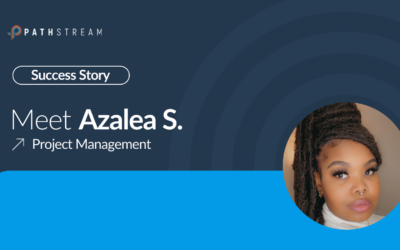Impress the Toughest Hiring Managers
You submitted a job application and the hiring manager called you back for an interview. Congratulations! Although you might be tempted to just show up and try your best, it is actually far more effective to take the time to prepare so you can put your best foot forward.
How should you do this? There are 10 steps that the career coaches at Pathstream recommend you take:
1.First, go back to the job description and review it very carefully to refresh your understanding.
What are the specifics of the position? What team would this role be on? Would you be replacing someone in this role or starting the function from scratch? Try to gain as much information as possible from the job description. Understanding the details of the position will enable you to share relevant examples from your own professional history so that the hiring manager can tell you are qualified. It will also give you very good clues about the types of questions your interviewer might ask you. For example, does the job description mention that this role will require strong attention to detail? If so, be prepared to describe situations where you have demonstrated a strong attention to detail in the past.
2. Be ready to explain why you are a good fit for the role and why you are applying.
Once you’ve familiarized yourself with the job description, then start to think about why you are a good fit for this particular position. Make a list of how your strengths and experiences align with what they are looking for. Try to be as concrete as possible. For example, if they are looking for someone with experience writing digital ad copy, think about 2 recent experiences where you drafted copy so that you’d be prepared to speak about this dimension of the role.
Then, think about how this opportunity would fit with your overall career goals and why you would be excited to take on this new position. Practice explaining why you’re excited about this role and what you would bring to this position in 1–2 minutes. You want your genuine enthusiasm to come through and, again, it helps if you can be as specific as possible about the alignment between your past experiences and this new job.
3. Research the company — including the product, team, and recent press.
Many people research the particular position they are applying for and stop there. This is a mistake! You should also keep in mind that this role will of course be part of a larger company. Being familiar with the core elements of the business will help you come across as a much more informed (and therefore qualified) candidate.
To research the company, start by digging into the details around the products, services or programs they offer. If you’re applying for a marketing role, make sure you sign up for their email list, request a free trial, or go through the purchase experience on their website. If you’re applying for a data role, look for any dashboards or information they share publicly and think about the kinds of data you’d be asked to analyze. If you’re looking at a sales or business development role, try to understand what types of customers you’d be pitching. Write down key terminology and product details so you’ll be able to describe these fluently in an interview.
Then, make sure you spend some time researching the team. Read about the background of your interviewer and the hiring manager if possible to get a sense of their perspectives. Research how the company is structured and try to get a sense of how this role would fit with the rest of the team you are joining (if you can’t determine this from the website and other publicly available materials, this would be a good question to ask at the end of the interview).
Look for recent mentions of the company in the press. You can usually do this by looking on the company’s blog or by searching the “News” tab on Google. This will give you a sense of the current events or announcements that might be shaping the business. In addition, we often recommend searching on YouTube or a podcast app for any recent interviews that the CEO or other team members might have conducted publicly. These interviews can often give you great intel on the company’s priorities and how the company leadership thinks. If you can find recent ones, they are worth a listen.
Finally, spend some time looking on LinkedIn to see if you have any existing contacts at the company (including friends of friends). It can sometimes help to reach out to these people, let them know you are interviewing for a specific position, and ask if they have any advice or context it would be helpful to keep in mind. Getting this “inside scoop” can help you give you a sense of what to focus on in the interview.
4. Brainstorm the possible questions you could be asked including behavioral and hypothetical questions.
Did you know it’s possible to anticipate many of the questions you’ll get in an interview so you can start to prepare how you will respond to them? To start predicting these, it can help to first understand the difference between the two primary types of interview questions: behavioral questions and hypothetical questions.
Behavioral questions are questions that ask about your past behaviors. For example: Tell me about when you led a team or Tell me about a time when you made a mistake or Give me an example of a time when you communicated a message effectively.
Hypothetical questions are an opportunity to talk through situations you might face in the future. For example: How would you handle dealing with a difficult customer? or How would you deal with a situation when a client stops responding?
Look again at the job description and come up with a list of 10 behavioral questions and 10 hypothetical questions you think you might be asked about the role. Then, you can also study lists of common interview questions. For example, we like this list and this list.
Here are some of the common interview questions we recommend you practice answering:
- Tell me about yourself and what interests you about becoming a (Salesforce Admin, data analyst, digital marketer, etc)?
- What are your greatest strengths?
- Tell me about a difficult situation at work and how you overcame it.
5. Practice your answers by writing down key bullet points.
You’ve come up with your list of at least 20 questions. Great! Now it’s time to practice. Recruiters at Google recommend that candidates actually spend time writing down answers to anticipated questions in advance. Why? This helps ensure that you carefully consider your most powerful talking points. Put 20 minutes on the clock and try to write down a bullet point list of things you would say in response to each question. Then, go back and refine your answers to any of the questions you struggled with.
6. Rehearse thinking on your feet.
This might sound counterintuitive, but you should also spend some time thinking about alternative answers to these common questions in case an interviewer is looking for something different. Sometimes in an interview, you’ll be able to sense from an interviewer’s body language or reactions that they are not quite enthusiastic about your response. Or they might simply ask you for another example of a behavior you just described. If that is the case, it helps to be able to show you can think on your feet and come up with an alternative example or explanation. If you spend some time practicing how you can adjust rapidly and come up with a new response, you’ll be better equipped to do this in an interview.
7. Make sure your answers are specific and data-driven.
The strongest and most powerful answers will be specific and data-driven. Look back over the talking points you drafted. Did you share concrete examples and stories? Did you quantify the impact you had where possible? If not, take some time to try to figure out how you could weave real examples and data into your responses. For example, if you are describing a marketing campaign you launched, include information on the number of subscribers you sent it to and the percentage increase in overall sales you generated. If you are describing a new report you published, share the number of subscribers who downloaded it and the amount of new donations it drove for your nonprofit. The most polished candidates have specific examples and data at their fingertips that they can use to objectively show how they’ve made a difference in the past and how they can do it again.
8. Do a mock interview.
Now that you have your list of questions, it can be helpful to share that list with a friend or family member and ask them to do a sample interview with you. You can also encourage them to read the job description and throw in some additional questions they think could be relevant.
Practice responding exactly how you would in a real interview. If the interview is going to be done virtually over Zoom or other video conference platform, practice using it so you can set up your background, check your sound, and adjust your camera as needed. Ask your mock interviewer for feedback on the length and quality of your responses, your body language, and any other areas for improvement.
Ideally, you should also record your mock interview so you can go back and listen and identify areas for improvement yourself. Don’t be too critical though! It’s always hard to listen to yourself, but we can guarantee you that you will be ten times more prepared if you actually invest in this type of rehearsal rather than just going in cold.
9. Get the logistical details right and have a snack before the interview!
Make sure you double check all the logistics in advance including the time and location so you don’t miss it! If you are interviewing virtually, set up your space ahead of time and make sure others in your household know they should be quiet during the call. If you have to travel to the interview, plan to arrive early in case of any unforeseen delays. Also, don’t forget to do basic but important things like making sure you get a good night’s sleep the night before and eat a healthy meal or snack before you interview so you won’t get hungry in the middle. Bring a water bottle so it’s available if you need a quick drink.
10. Finally, be confident and enthusiastic and prepare some questions for your interviewer.
Don’t forget that you’ve been called for an interview because the company sees exciting potential in your candidacy. They want to like you! Smile and try to connect personally with your interviewers. Convey your excitement for the work they are doing and your eagerness to join the team. Sometimes enthusiasm is contagious and can go a long way towards convincing them that you are the right person for the role. However, be authentic and true to yourself and your communication style and convey your excitement in a way that makes sense for you. Above all, know that everyone is slightly nervous in an interview, but this adrenaline can help you focus and perform well. Take a deep breath and do your best!
Finally, make sure you have prepared some questions for the interviewer about their experience at the company and their understanding of what it would take to succeed in the role. Always try to ask questions that you can’t find the answers to on the company website or from other public sources. You’ll know the interview is going well if you are able to turn the Q&A period at the end into a robust and lively discussion. At a minimum, make sure you have some thoughtful questions ready.
Remember that going through these steps might seem like a lot of work (it is!), but taking the time to prepare can be the difference between landing the job and coming away disappointed. It’s a competitive job market out there so invest in preparing for every interview you are lucky enough to get and the results should speak for themselves. Good luck!
Was this helpful?
Thanks! What made it helpful?
How could we improve this post?






